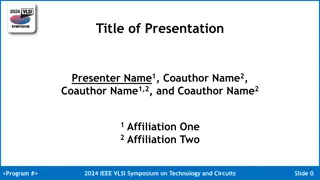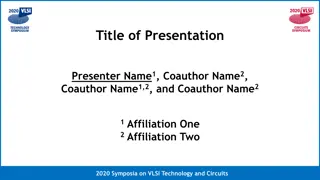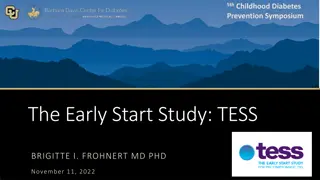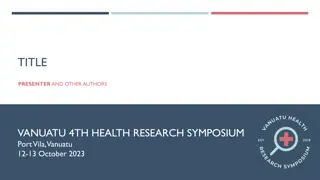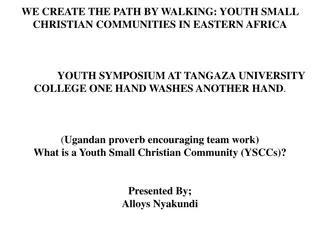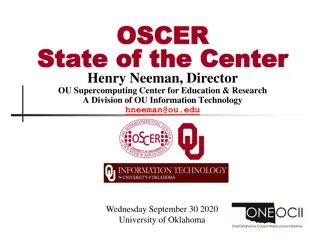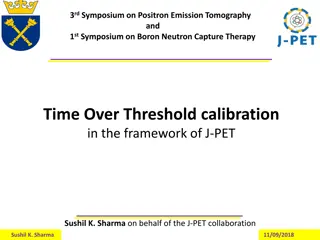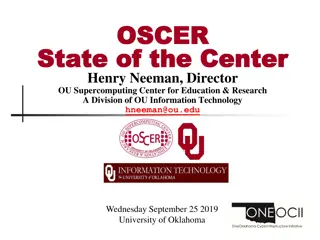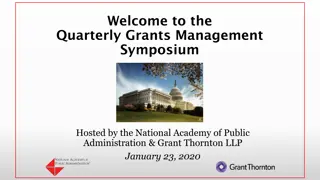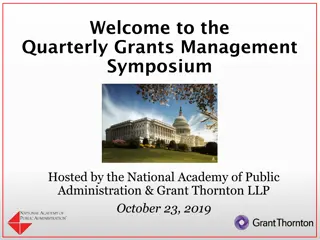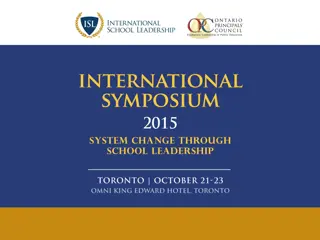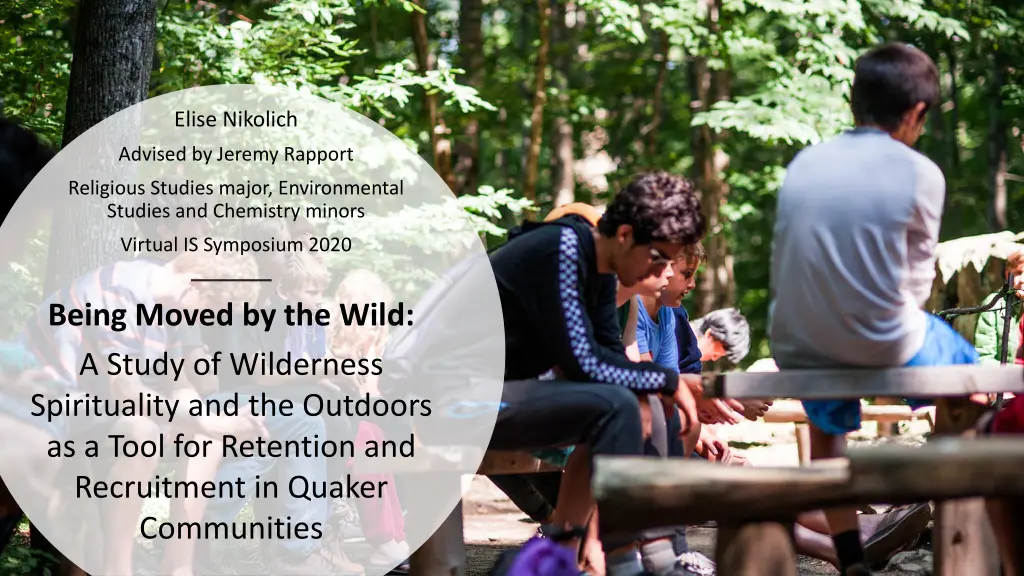
Wilderness Spirituality and Quaker Community Engagement Study
Explore the intersection of wilderness spirituality and community engagement within Quakerism, uncovering how the outdoors serves as a tool for retention and recruitment. Discover insights from surveys, interviews, and historical research conducted in this captivating study.
Download Presentation

Please find below an Image/Link to download the presentation.
The content on the website is provided AS IS for your information and personal use only. It may not be sold, licensed, or shared on other websites without obtaining consent from the author. If you encounter any issues during the download, it is possible that the publisher has removed the file from their server.
You are allowed to download the files provided on this website for personal or commercial use, subject to the condition that they are used lawfully. All files are the property of their respective owners.
The content on the website is provided AS IS for your information and personal use only. It may not be sold, licensed, or shared on other websites without obtaining consent from the author.
E N D
Presentation Transcript
Elise Nikolich Advised by Jeremy Rapport Religious Studies major, Environmental Studies and Chemistry minors Virtual IS Symposium 2020 Being Moved by the Wild: A Study of Wilderness Spirituality and the Outdoors as a Tool for Retention and Recruitment in Quaker Communities
The produce of the Earth is a gift from our gracious creator to the inhabitants. To impoverish the Earth now to support outward greatness appears to be an injury to the succeeding age. -John Woolman, 1772
Quakerism and the Outdoors Things to consider: Quakerism is a protestant sect centered around the idea that there is that of God or the Light in everything and it is our responsibility to honor that in everyone and everything Quakers do not live in isolated communities. Much like majority sects, they live modern lives and every Sunday at a Meeting House or Friends Meeting The faith uses a practice known as Meeting for Worship that allows members to sit in silent community together until someone is moved by the light or the spirit to speak out of the silence Quakerism is based upon testimonies, rather than a creed, that are most often represented with the acronym S.P.I.C.E.S.: Simplicity, peace, integrity, community, equity, and stewardship They offer lots of programming that encourages practitioners to create community, as well as experiencing it in the outdoors
Methods A three-pronged approach: A survey Distributed through Facebook groups associated with Quaker organizations and those organizations found in Quaker testimonies, as well as larger open Quaker groups ~250 responses Interviews Three interviews were conducted with select leaders from organizations creating experiences of Quakerism or the Quaker testimonies in the outdoors An investigation of Quaker history and the context surrounding these experiences Compiled historical documents from Quaker leaders speaking to the connection between Quakerism and the outdoors Compiled accounts of collective effervescence (community) and affective bonding (personal connection) as external factors leading to the outdoors as a retention and recruitment tool
Survey Data What the data says: Survey responses were broken into three groups based on external forces at playing during people s first experiences of Quakerism From birth retention Recruitment from involvement Adulthood recruitment Trends towards the outdoors as a significant recruitment tool and a less but still significant trend towards the outdoors as a retention tool Programming serves as pathways but is heavily concentrated in younger ages therefore higher rates of first experiences of Quakerism in the outdoors occurs between the ages of 9 and 18 Indication that community forces and personal connection to other community members serve as an important role in trends towards the outdoors as a useful retention and recruitment tool
Intentions Interviews indicated: The importance of the outdoors in understanding not only individuals, but also Quakerism The importance and attraction of community as a way to connect to these experiences That Quakerism, the outdoors, and community, cannot be truly separated and evaluated as such That the Quaker testimonies encourage closeness to the natural world and that these experience foster faith experiences That because of all of these factors, outdoor programming can be used to draw people into the community and therefore closer to the faith
External Factors External Factors: There are proven positive psychological impacts of the outdoors and Nature on personal Improves mental health Fosters connection building Over-whelming feelings of peace and connection Affective bonding, or personal connections, make individuals more likely to identify with a faith or group Collective effervescence, or connection and affection for a community, serves as a uniting factor that is attractive to individuals and serves as an additional factor in retention
Wilderness Spirituality Previously defined as: A feeling of connection and interrelationship with other people and nature; a heightened sense of awareness and elevated consciousness beyond the everyday and corporeal world; cognitive and affective dimensions of human understandings embracing peace, tranquility, harmony, happiness, awe, wonder, and humbleness; and the possible presence of religious meaning and explanation. (Ashley, 2007) New three-part framework based upon this definition and others, as well as personal accounts from surveys and interviews: 1. A description of the spaces in which such experiences take place 2. An identification of the relationship between such experiences with self 3. an identification of the benefits of such experiences, both in- and extrinsic This new framework allows space for difference of experience as well as perspective to be incorporated into the definition and therefore broader application
Conclusions and Looking Forward Conclusions: Experiences of Quakerism in the outdoors foster increased retention and recruitment, particularly in those exposed to such experiences aged 9 to 18 This is fostered by the space, Quaker testimonies, community, personal connection and the intentions of those shaping and planning such communities Broader definition offers a more inclusive approach to wilderness spirituality that offers space for both personal and religious interpretations as well as greater access Further Applications: Other faith communities: This would require great consideration of faith specific doctrine in facilitating this positive relationship, but community and personal connection serve as significant cofactors to experiences in the outdoors Further application of the definition of wilderness spirituality based on the more open and accessible three-part framework can be done to further pin-point this academic area of interest for many
Only when we see that we are part of the totality of the planet, not a superior part with special privileges, can we work effectively to bring about an earth restored to wholeness. Darkness is no less desirable than light. It is rather, a rich source of creativity First there is the darkness of the earth in which the seeds wait all through the winter. Second, there is the darkness of the womb in which the young mammal grows into sufficient viability to be born and take its place on earth, as a separate being . And third, there is the darkness of night, when the garish sun has gone down and the things of earth are blotted out, and we may glimpse the vastness of the universe of which we are part -Elizabeth Watson, 1996

